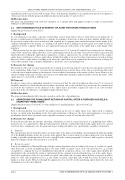Page 1120 - SAIT Compendium 2016 Volume2
P. 1120
EXPLANATORY MEMORANDUM ON THE TAXATION LAWS AMENDMENT BILL, 2015
amendments in those provisions will be made. These will align the de nition of an acquisition transaction for purposes of those provisions with the proposed de nitions discussed in points (1) and (2) above.
IV. Effective date
The proposed amendments will come into operation on 1 January 2016 and apply in respect of years of assessment ending on or after that date.
2.2. ANTI-AVOIDANCE RULE IN RESPECT OF ASSET FOR SHARE TRANSACTIONS
[Applicable provision: Section 42(5)]
I. Background
As a mechanism to encourage corporate restructuring, section 42 provides roll-over relief when assets giving rise to income or capital gains are transferred to a company in exchange for the issue of shares in that company. In this respect, the provision requires that assets transferred and acquired by a company, must retain their nature in the hands of the company subsequent to the transfer (i.e. trading stock must be held as trading stock and capital assets must be held as capital asset by the company). However, no requirement is placed on the nature of the equity shares in the hands of the transferor.
This provision has an anti-avoidance measure (subsection (5) of section 42) aimed at preventing the tax arbitrage achieved by a transferor selling allowance assets and trading stock tax-free in terms of an asset-for-share transaction and shortly thereafter selling the equity shares acquired as a result as capital assets. As a result, the transferor who acquires equity shares and disposes of those equity shares within 18 months of an asset-for-share transaction is treated as having disposed of those equity shares as trading stock where the equity shares were acquired by the transferor in exchange for assets whose market value is mainly attributable to allowance assets and trading stock.
II. Reasons for change
The intention of the roll-over provisions in the Act is aimed at tax deferral and not to alter the tax consequences involved in a restructuring. Subsection (5) of section 42 was intended to prevent the abuse of the roll-over provisions that seeks to alter the tax treatment arising on the disposal of assets which is dependent on the nature of those assets. However, the current wording of this anti-avoidance provision creates unintended anomalies and potentially converts the nature of the equity shares to assets held as trading stock.
III. Proposal
In order to remove these unintended anomalies, it is proposed that the current wording in subsection (5) of section 42 should be amended to clarify that the anti-avoidance provision only seeks to include as gross income, the consideration received by the transferor on the disposal of the equity shares previously acquired in terms of an asset-for-share transaction in the circumstances contemplated under that provision.
IV. Effective date
The proposed amendments will come into operation on the date of promulgation.
2.3 ADDRESSING THE PROBLEM OF RETURN OF CAPITAL AFTER A TAXPAYER HAS HELD A SHARE FOR THREE YEARS
[Applicable provisions: Section 9C(1) of the de nition of ‘qualifying share’ and section 9C(2)]
I. Background
Prior to the introduction of section 9C, the gains realised on the sale of equity shares were either taxed as ordinary income or capital gains depending on the facts and circumstances. However, the facts and circumstances test proved problematic and in order to provide a more equitable treatment section 9C was introduced in 2007.
II. Reasons for change
Section 9C provides that any amount, other than a dividend, received or accrued in respect of a qualifying share will be deemed to be of a capital nature. This provided taxpayers with the certainty that if they hold equity shares for a period of at least three continuous years, the gains and losses on disposal will be of a capital nature regardless of intention.
A. Disposal
The current policy intent currently requires an equity share to be disposed, including a deemed disposal under paragraph 12 of the Eighth Schedule, before the section can be applied. The section is silent as to what a disposal is or its meaning, leading to possible misinterpretation. It is also argued that the current paragraph 12 reference with regard to a deemed disposal is misplaced since the insertion of section 9H.
B. Return of capital
It has been submitted to National Treasury that the current legislation does not address the issue of a return of capital, other than cash, received on qualifying shares. The term ‘return of capital’ is not a new concept to the Act e.g. a return of capital by a company by way of a distribution will result in a reduction of base cost of the equity shares held by the shareholder to the extent that the return of capital made by the company is greater than the base cost of the equity shares. On a basic application of the Act, any return of capital, other than cash, on equity shares held by a taxpayer would be subject to facts and circumstances test e.g. any return of capital, other than cash, would be revenue in nature in the hands of a share dealer. However through the application of section 9C on the underlying equity shares the facts and circumstances test becomes blurred.
1112 SAIT CompendIum oF TAx LegISLATIon VoLume 2


